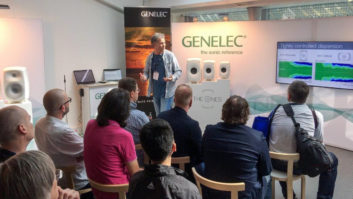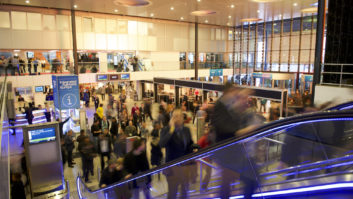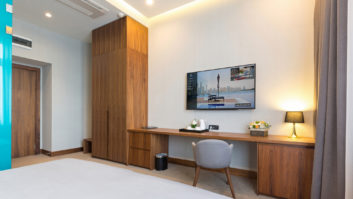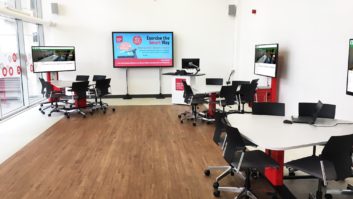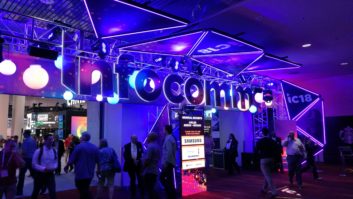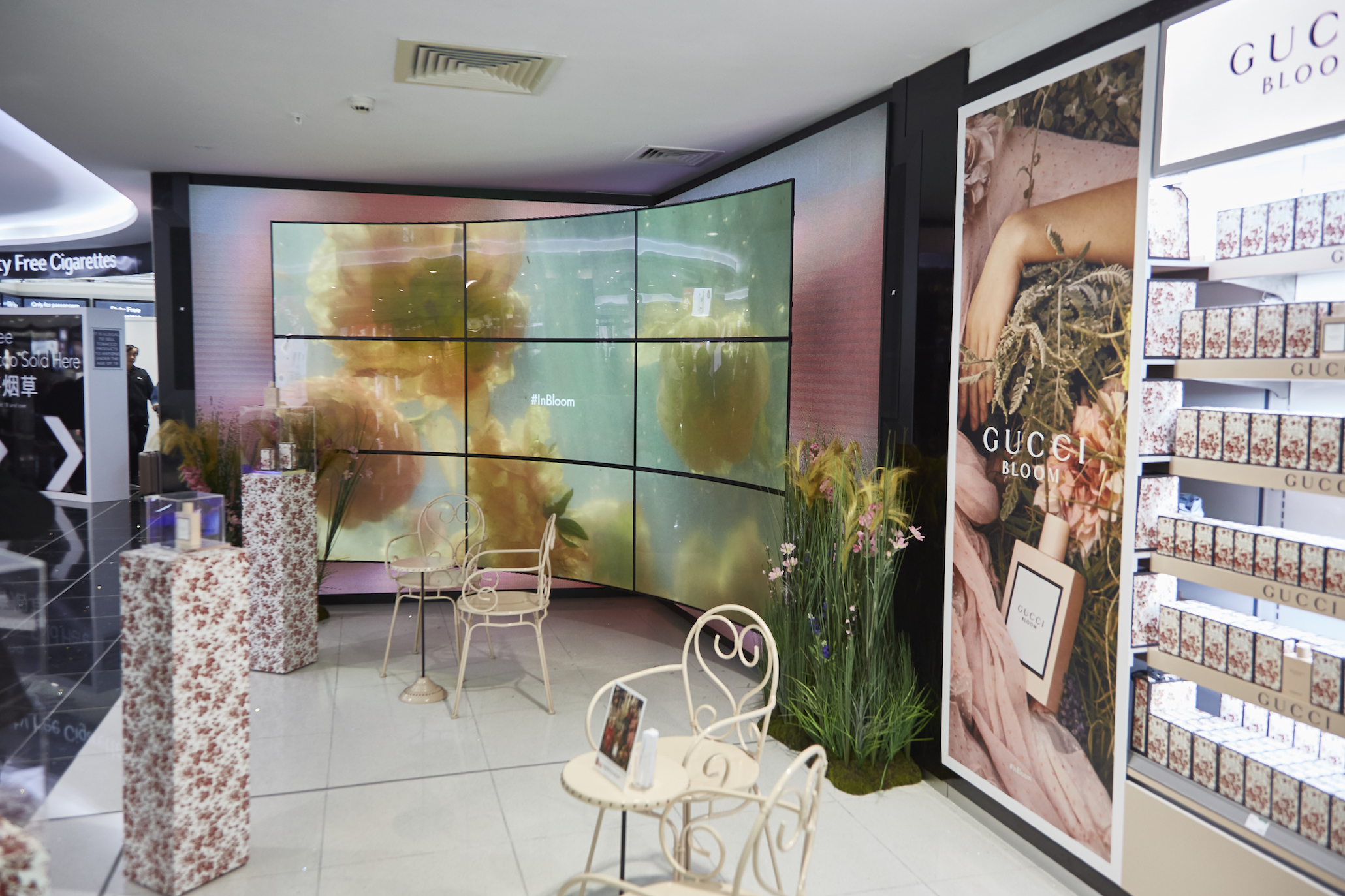
In the first part of this feature on digital storytelling and user experiences we revealed the verticals embracing experienced-based storytelling. Here we look at the non-linear approaches being employed to increase interaction with visitors.
When it comes to the more established storytelling verticals, recent developments in the way AV is being employed have improved the way that stories are told, with interaction particularly making a difference: “More immersion, more interaction, non-linear”, according to Peter Pauwels, director of strategic marketing at Barco.
To pull visitors into the story and away from their smartphones there needs to be a larger canvas. This is leading to the use of larger digital walls and mixed technology, with LED, projection and LCD coming together. At the same time, visitors expect a greater degree of interaction and a varied, non-linear approach to the storytelling.
“Visitors are expecting the content to adapt to them,” says Pauwels. “Great storytelling requires interaction from the audience. By creating interactivity you can assure a longer engagement of the spectators. Walking through a museum or theme park, through a pre-set path or scenario does not work. Every visitor will find his own way and his own viewpoint. The AV technology needs to enable this.”
AV is certainly allowing storytellers to create a more varied engaging experience while appealing to a wider demographic: “Exhibitions now tend to include more interactive and immersive elements, but retain some of the more traditional features so as to appeal to a wider range of ages,” says Emma Bigg, managing director of Octavius RE.
“We’re definitely seeing an increased demand for interactivity,” adds Barton. “Something that allows the visitor to discover, and perhaps define, their own experience. This interactivity can be venue-led – for example, a member of staff leads guests through a journey and encourages participation to drive engagement. Alternatively, visitor-controlled experiences make for a particularly exciting experience.”
Daniel Lee, managing director at Hewshott International, comments: “Interactivity and user engagement are the keys here. Rather than telling a story to an audience, they want the audience to participate in the story themselves – maybe even have a way to affect the story and its outcome.”
Tools and techniques
AV professionals are utilising a variety of tools and techniques to tell these stories, and these methodologies are key to ensuring that each piece of storytelling fully engages its audience.
Holovis utilises its RideView proprietary software suite to bring stories to life in shared VR CAVEs – four or five-sided structures where all the walls feature volumetric projection and users wear 3D glasses to interpret data and explore it in real time, 1:1 scale.
This allows multidisciplinary teams, from creatives to engineers, to experience the final set-up in a physical space long before they would normally be able to, and has proved an invaluable tool for identifying things that aren’t working within the proposed design – allowing changes to be made before any physical builds begin.
“Talking and showing is key,” says Bigg. “The reason that experience centres work and digital storytelling is effective is that most people respond to visual cues. Quite often clients need to see and hear examples before they can truly envision the solution. Sometimes it’s as important to eliminate everything they don’t like before you get to something they do.”
“Pre-visualisation is a key part of our offering now and we’re continuing to develop this as a feature that allows customers to visualise their system and content prior to installation,” adds Matt Barton, managing director, 7thSense Design. “This is essential as it enables clients to better understand both complexities and opportunities when setting up display systems. We have always found that working with clients early on the life of a project to review concepts and ideas leads to the best quality and the most positive project outcomes.”
Lee adds: “More and more we are using 3D visualisation tools. To deliver the client’s vision, we are using the same tools as always but deployed in a different way. We are also adding a layer of intelligence and interactivity across the top.”
In terms of the potential for AV business, there appear to be very few limits to storytelling’s expansion capacity. According to Pauwels, storytelling as a way of communicating messaging has now entered every vertical market: “A corporate message, an artistic vision, an education project, religion, broadcast: the best way to transfer the message is through storytelling. This trend is primarily driving the way the content is developed: more video, more interaction. But it is also driving the use of technology.
“Although it started in themed entertainment, we see storytelling appearing in all Barco verticals, from live events (corporate gatherings, live concert or outdoor mappings) through large fixed installations in corporate experience centres, broadcast studios, museums and houses of worship.”
Lee also sees demand across the board: “I think that most organisations now want to tell their story. Whether it’s a corporate, a hotel or a retailer, they all want their clients and potential clients to form a lasting relationship with them and they often do this through storytelling.”
Barton has a similar view: “AV is a great and highly versatile enabler for creative storytelling. We are seeing AV in storytelling in many interesting new applications such as airports, shopping centres, corporate venues and casinos where use cases vary from direct advertising and ‘lobby-attractions’ to some more abstract and intriguing artistic installations.”
Peter Cliff, creative director, Holovis, focuses on two growth areas: “AV and emerging technologies are the catalysts for storytelling in a number of growing sectors including on-board cruise ships and the property market. Cruise ships are looking to extend the guest experience using AR and tracking technologies, creating unique interactions for each passenger. This extends the narratives of the ship’s entertainment and allows people to be creating their own adventures based on the interactions they have.
“Within the property market, experience centres are being created to help sell homes, utilising new technologies and IoT connectivity as a key feature of modern connected living. These present samples of different technologies with a story led approach to exploring them all, encouraging people to envisage this as their new life.”
Storytelling is only successful if end users are satisfied, and such satisfaction demands a seamless, frictionless AV experience – which in itself requires detailed and considered AV consultation, solutions and delivery. Whether the storytelling takes place in a global brand’s visitor exhibition, a retail hub, theme park ride, or corporate experience centre, the key to a story’s success is exceptional user experience.
www.7thsensedesign.com
www.barco.com
www.hewshott.com
www.holovis.com
www.octaviusre.com

